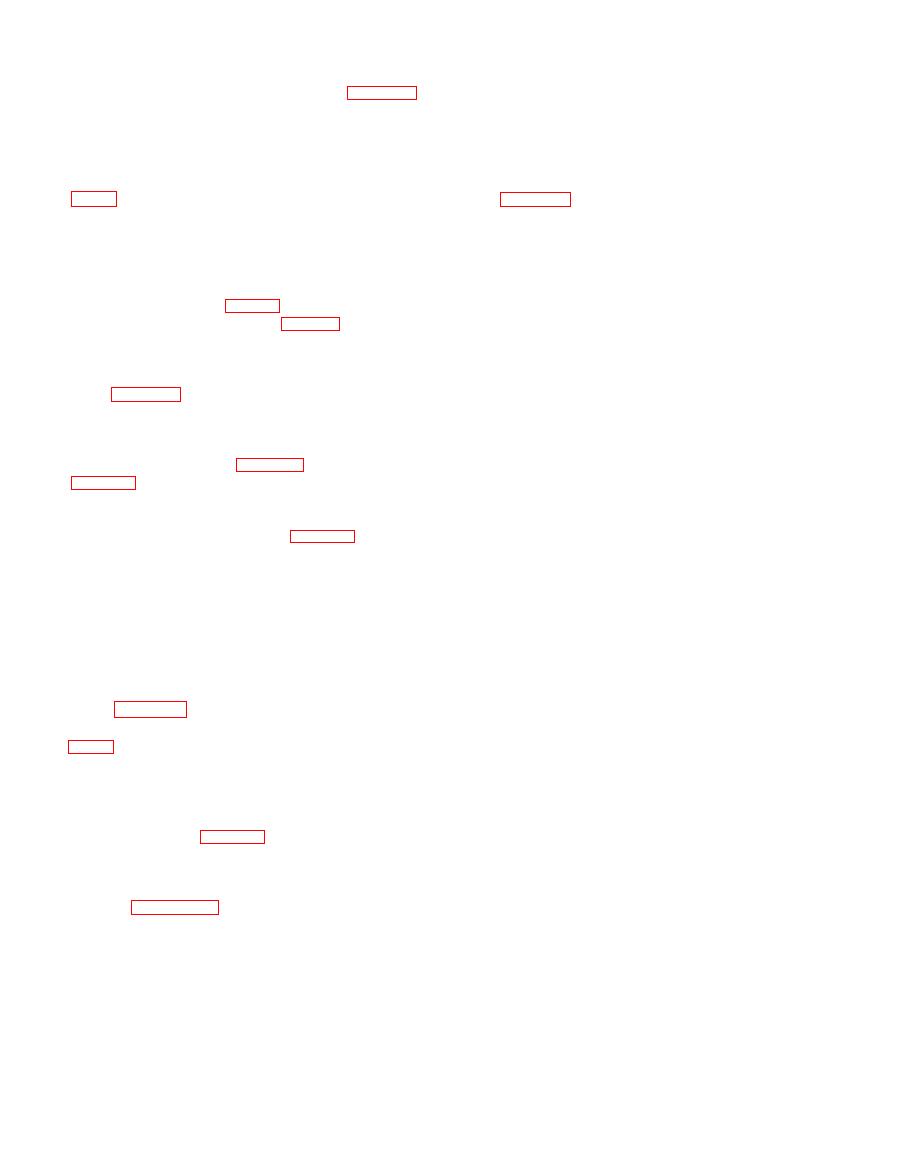 |
|||
|
|
|||
|
|
|||
| ||||||||||
|
|
 TM 10-3930-634-34
(2) If the crankshaft has been subjected to ex-
and remove lower thrust washer halves and lower
cessive overheating, the heat treatment will be de-
bearing shell.
stroyed and a new crankshaft should be installed.
(b) Remove upper thrust washer halves by push-
(3) Used crankshafts will sometimes show a cer-
ing on one side with a small rod, forcing washer
tain amount of ridging caused by the groove in the up-
around and out on opposite side of the journal (fig.
per main bearing shell or lower connecting rod bearing
shell (fig. 3-135, A). Ridges exceeding 0.0002 inch
(c) Remove the upper rear main bearing shell by
must be removed. If the ridges are not removed, local-
driving on the edge of the shell with a small curved
ized high unit pressures on new bearing shells will re-
rod, at the same time rotating the crankshaft. This
sult during engine operation.
(4) The ridges may be removed by working crocus
will roll the bearing shell from its position.
cloth, wet with fuel oil, around the circumference of
c. Removal of Crankshaft and Main Bearings.
the crankshaft journal. If the ridges are greater than
(1) Remove engine (para 2-5).
0.0005 inch, first use 120 grit emery cloth to cleanup
(2) Remove rocker arm covers (para 3-16) and re-
the ridge, 240 grit emery cloth for finishing, and wet
move fuel oil pipes. Install dust caps on injector and
crocus cloth for polishing. Use of a piece of rawhide or
fuel connectors.
other suitable rope wrapped around the emery cloth or
(3) Pivot the rocker arms away from the valve
crocus cloth and drawn back and forth will minimize
stems (para 3-23). This step is necessary to prevent
the possibility of an out-of-round condition developing
damage to valves and valve stems should a piston
assembly be allowed to drop or pushed down on the
(keep the strands of rawhide apart to avoid bind). If
valves.
rawhide or rope is not used, the crankshaft should be
rotated at intervals. If the ridges are greater than
(4) Remove oil pan (para 3-26) and oil inlet tube
0.001 inch the crankshaft may have to be reground.
(5) Carefully inspect the front and rear end of the
(5) Remove lower front cover and oil pump (para
crankshaft in the area of the oil seal contact surface
3-31).
for evidence of a rough or grooved condition. Any
(6) Remove flywheel housing (para 3-33).
imperfections of the oil seal contact surface will result
(7) Remove the connecting rod bearing caps (para
in oil leakage at this point.
3-34). Push the piston assemblies toward the cylinder
(6) Slight ridges on the crankshaft oil seal contact
head until the connecting rod bolts are clear of the
surfaces may be cleaned up with emery cloth and cro-
crankshaft.
NOTE
cus cloth in the same manner as detailed for the crank-
shaft journals. If the crankshaft cannot be cleaned up
It maybe necessary to push one of the valves
satisfactorily, replace the crankshaft..
open to expel air from the cylinder chamber
(7) Check the crankshaft thrust surfaces for ex-
when pushing piston into block.
cessive wear or grooving. If only slightly worn, the
(8) Remove main bearing caps and lower bearing
surfaces may be dressed up with a stone. Otherwise, it
shells (figs, 3-129 and 3-131).
will be necessary to regrind the thrust surfaces.
(9) Attach a suitable sling to crankshaft (19, fig.
(8) Check the crankshaft timing gear for worn or
chipped teeth. Replace the gear if necessary.
block. Remove upper bearing shells (9 and 12) from
(9) Support the crankshaft on its front and rear
main bearing supports.
d. Disassembly.
journals on V-blocks or in a lathe and check the aline-
ment at the adjacent intermediate main journals with
(1) Remove the crankshaft timing gear with a
a dial indicator.
suitable gear puller (fig. 3-133).
(10) The maximum runout on the intermediate
(2) If the oil pump drive gear requires replace-
journals must not exceed 0.002 inch total indicator
ment, install the crankshaft pulley retaining bolt into
reading.
end of crankshaft and remove the gear with puller as
(11) When the runout on the adjacent journals is
shown in figure 3-134.
e. Cleaning.
in opposite directions, the sum must not exceed 0.003
(1) Remove crankshaft plugs and clean out the oil
inch total indicator reading. When the runout on the
adjacent journals is in the same direction, the differ-
passages thoroughly with a stiff wire brush,
ence must not exceed 0.003 inch total indicator read-
( 2 ) Clean the crankshaft, bearing shells and
ing. When high spots of runout on the adjacent jour-
timing gear with cleaning solvent P-D-680. Dry
nals are at right angles to each other, the sum must
thoroughly with compressed air and reinstall plugs.
f. Inspection and Repair.
not exceed 0.004 inch total indicator reading, or 0.002
inch on each journal. If the runout limit is greater than
(1) Inspect the keyways for evidence of cracks or
given above, the crankshaft must be replaced.
wear, Replace the crankshaft, if necessary.
3-34
|
|
Privacy Statement - Press Release - Copyright Information. - Contact Us |